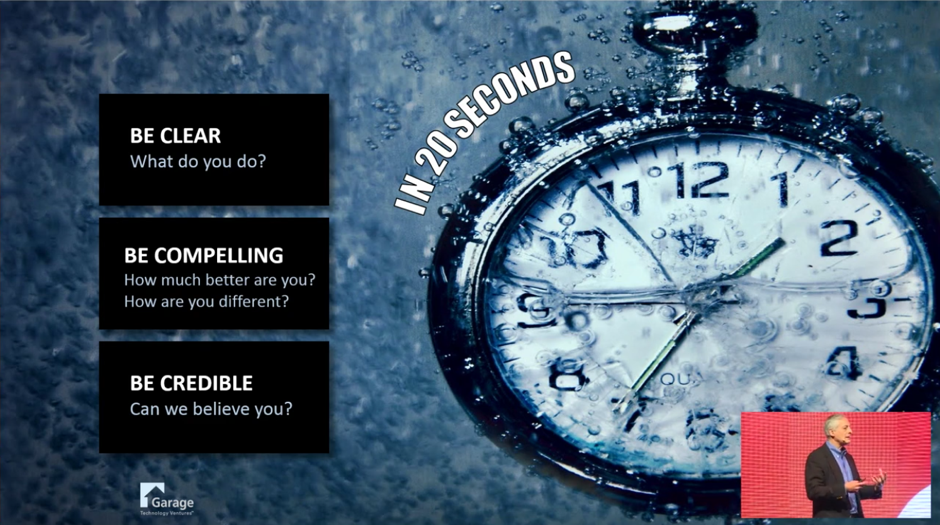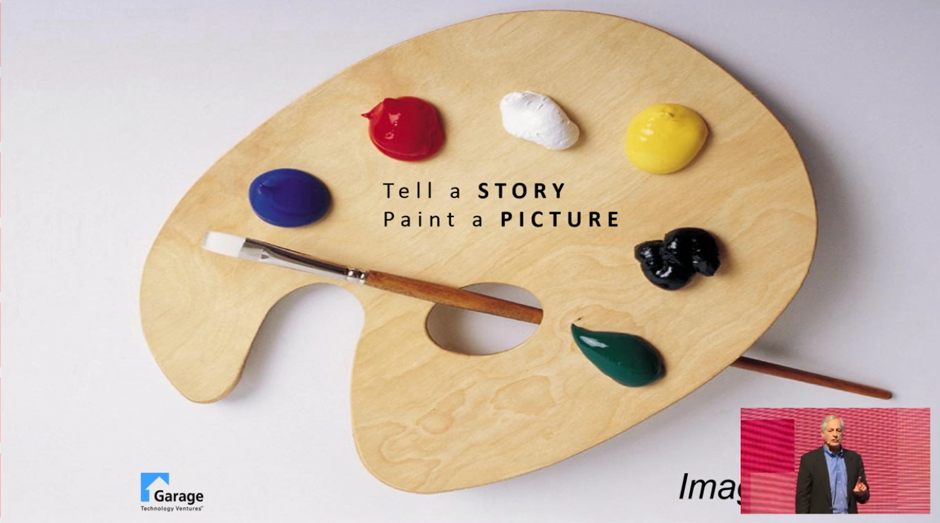No More Elevator Pitches
How to really sell your business – without an elevator pitch.
Bill Reichert, from Garage Technology Ventures, came to StartCon with one major theme in mind: the death of the elevator pitch. He doesn’t put it in so many words, but his explanation is so clear and makes such sense that the conclusion is inescapable. He came to talk about how to improve your ability to communicate, and the audience quickly learned that he is not a fan of the elevator pitch.
You can watch Bill’s full keynote presentation and others with StartCon’s Digital Pass

Why not an elevator pitch?
There’s a lot of information out there on how to pitch to investors, potential partners, customers and so on. It’s a lucrative industry and one thing you’ll find a lot of is coaching on how to create the perfect elevator pitch. The problem is, Bill says, “there are no elevators in Silicon Valley.” In fact, “the only place you can use an elevator pitch is at an elevator pitch competition.”
Most of the time, you have even less time than that to catch the attention of your listener. “You’ve got 20 seconds to be compelling, or you might as well go home.”
Human anatomy 101

Bill surprised the audience by telling them they need to think about human anatomy 101, but his anatomy lesson was very simple. You have to engage three parts of your listeners: the head, the heart, and the gut.
The Head: you’ve got to be logical and clear; your pitch has to make sense.
The Heart: you’ve got to get your listener fired up. They have to believe in your idea – you have to figure out “what is loveable about your company” and then communicate that.
The Gut: you’ve got to pass those instinctive checks for when someone is telling the truth.
The three Cs
To help you with reaching these three body parts, Bill has come up with the three Cs. You’ve got to be concise, compelling, and credible.

To be compelling, for example, you need to explain why your proposition is better than that of all the other people doing the exact same thing. “You’ve gotta get our hearts beating faster,” Bill explains.
If you figure this out, you’ve got it made. Bill points out that you can use exactly the same technique no matter who you’re trying to get engaged – potential employees, customers, venture capitalists…

Guidelines
Bill warns against using a template. That just leaves you sounding like every other company, and it doesn’t cover the specific issues relevant to your project. But he does have some guidelines on how you can condense everything about your company down into those 20 seconds, those first 50 words or so.

First, you need to describe what you do. You should think about your audience here: you’re talking to someone in the industry, an intelligent audience, but they may not understand what you mean if you use technobabble. Bill suggests your rule of thumb should be the kind of vocabulary you’d find on TechCrunch.
This isn’t the point where you talk about your product. Think bigger! “Tell us what your company is doing, in what marketplace, for what customers,” Bill says.
Next up, you need to talk about the benefits to the person you’re speaking to.

What will it do for them? What’s “the big idea” behind what you do? You need to offer your listener obvious value.

And finally, you have to understand that other companies are out there doing very similar things. You need to shut that down, Bill explains. Don’t give them chance to think about that other company which is doing the same thing – make your own unique value obvious up front.
Alternative suggestions
Because the above are guidelines and not a strict template, the amount of variation can be astounding. Bill offers other suggestions as well – “tell a story, paint a picture,” he says. Ask your listener to “imagine if we could…” Drop a big name.

Most importantly, don’t leave the most important thing until last. “If you had told us at the beginning, we would have listened,” Bill says, explaining the impact of a team who had a Nobel prize winner as co-founder.
Key takeaways
· Remember that people make decisions based on their emotions, not on logic – by appealing to the heart and passing the gut check, you get a lot further than relying on logic alone.
· You have less time than you think. You need to get your key points out there right away to make sure your listeners are engaged.
· Be individual. It’s no use doing the exact same sort of pitch as everyone else. Find what works for your company, the story you want to tell.
(function () { var e = document.createElement(‘script’); e.type = ‘text/javascript’; e.async = true; e.src = (‘https:’ == document.location.protocol ? ‘https’ : ‘http’) + ‘://btn.createsend1.com/js/sb.min.js?v=3’; e.className = ‘createsend-script’; var s = document.getElementsByTagName(‘script’)[0]; s.parentNode.insertBefore(e, s); })();
Actionable Growth Tactics for 2017
The StartCon Digital Pass gives you access to over 75+ presentations and workshops from some of the world’s best entrepreneurs.
- Over 50 hours of actionable insights for your business
- Exclusive content that you will not find anywhere else
- Content from UBER, Zillow, SurveyMonkey, 500 Startups, Twilio, GrowthHackers, BitTorrent & more.
- New 2017 monthly content added
- Live stream access for all monthly events
Speakers include:
- Andrew Chen, Rider-Side Growth, UBER
- Jason Crusan, Director of Advanced Exploration Systems, NASA
- Elena Verna, SVP Growth, SurveyMonkey
- Nate Moch, VP Product Teams & Growth, Zillow
- Patrick Malatack, VP Product Management, Twilio
- Chandini Ammineni, Distribution Partner, 500 Startups
- Sean Ellis, Founder of Growth Hackers
- Christopher Lowe, Global Tech Media Specialist, Bloomberg






